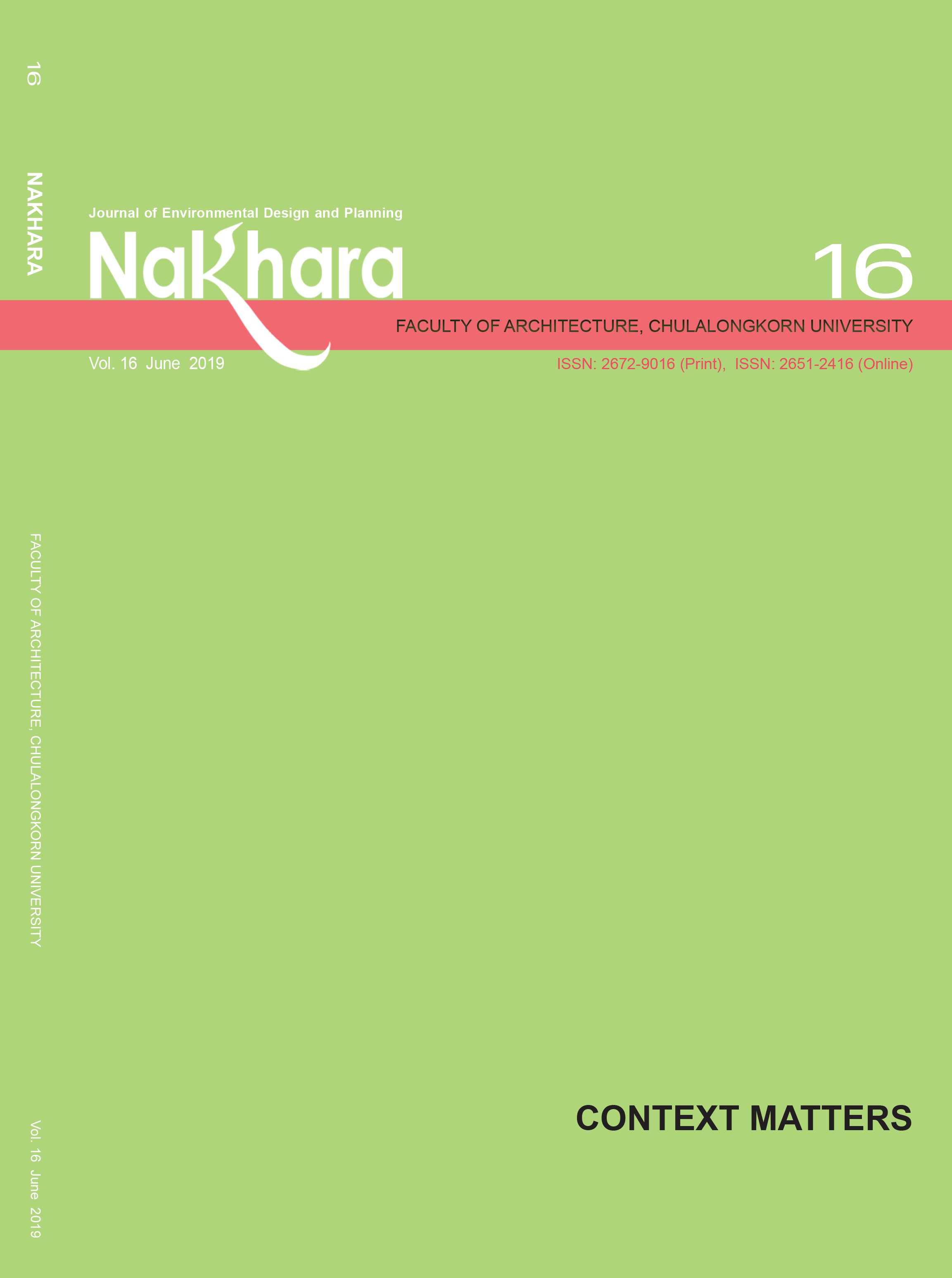Serial Cultural Heritage: Concept, Applications, Categorization and Its Roles in Present Day Contexts
Main Article Content
Abstract
Serial cultural heritage is a category of cultural heritage that is characterized by its formation of several cultural heritage sites which have shared meaning and values. The first recognition of serial cultural heritage was part of the World Heritage Convention and its subsequent Operational Guidelines for the Implementation of the World Heritage Convention, 1980. Since that time, cultural heritage series have been nominated and inscribed as World Heritage Sites continuously.
In general context, serial cultural heritage has been known and remembered since ancient times. Seven Wonders of the World is an example, although they are not called ‘serial cultural heritage’.
This article addresses the concept and other important aspects of serial cultural heritage in World Heritage and general contexts for better understanding of this category of cultural heritage that has been overlooked most of the time despite its values and significance in today’s world.
Article Details

This work is licensed under a Creative Commons Attribution-NonCommercial-NoDerivatives 4.0 International License.
References
Decisions About the Care of Important Places. 1st ed. Sydney, NSW: Australia ICOMOS, 1992.
Bond, S., and D. Worthing. Managing Built Heritage : The Role of Cultural Values and Significance. Second edition.
ed. Chichester, West Sussex: Wiley Blackwell, 2016.
Europe, Council of. “Council of Europe Framework Convention on the Value of Cultural Heritage for Society.” http://www.coe.int/en/web/conventions/full-list/-/conventions/rms/0900001680083746.
ICOMOS. “The Athens Charter for the Restoration of Historic Monuments – 1931 “ http://www.icomos.org/en/
charters-and-texts/179-articles-en-francais/ressources/charters-and-standards/167-the-athens-charter-for-therestoration-of-historic-monuments.
ICOMOS.“The Icomos Charter on Cultural Routes.” edited by International Council on Monuments and Sites (ICOMOS), 2008.
Jokilehto, J. “On Definitions of Cultural Heritage.” http://siteresources.worldbank.org/INTCHD/Resources/
articlejukkajokilehto.pdf
Martin, O., and Gendre, S. (eds.). “UNESCO World Heritage : Serial Properties and Nominations.” whc.
unesco.org/document/124861
Puczkó, L. and Rátz, T. . “Trailing Goethe, Humbert, and Ulysses : Cultural Routes in Tourism. .” In Cultural Tourism
Global and Local Perspectives, edited by G. Richards, 131-43. New York and London: Routledge, 2011.
UNESCO. “Convention Concerning the Protection of the World Cultural and Natural Heritage “ whc.unesco.org/en/
conventiontext
UNESCO. “Convention for the Protection of Cultural Property in the Event of Armed Conflict with Regulations
for the Execution of the Convention 1954 “ http://portal. unesco.org/en/ev.php-URL_ID=13637&URL_DO=DO_
TOPIC&URL_SECTION=201.html
UNESCO. “Convention on the Means of Prohibiting and Preventing the Illicit Import, Export and Transfer of
Ownership of Cultural Property 1970 “ http://portal. unesco.org/en/ev.php-URL_ID=13039&URL_DO=DO_
TOPIC&URL_SECTION=201.html
UNESCO. “Guidelines for the Preparation of Serial Nominations to the World Heritage List “ whc.unesco.org/
archive/serial-noms.htm
UNESCO.“Information Document Glossary of World Heritage Terms “ http://whc.unesco.org/archive/gloss96.htm.
UNESCO. Managing Cultural World Heritage. [in English] Paris: UNESCO, 2013.
UNESCO. “Operational Guidelines for the Implementation of the World Heritage Convention “ http://whc.unesco.org/
archive/opguide78-en.pdf
UNESCO. “Operational Guidelines for the Implementation of the World Heritage Convention “ http://whc.unesco.org/
archive/opguide80-en.pdf
UNESCO. “Operational Guidelines for the Implementation of the World Heritage Convention “ http://whc.unesco.org/
opguide17-en.pdf.
UNESCO.“Preparing World Heritage Nominations “ http://whc.unesco.org/en/preparing-world-heritage-nominations.
UNESCO. “Text of the Convention for the Safeguarding of the Intangible Cultural Heritage “ http://www.unesco.org/
culture/ich/en/convention.
Wikipedia. “Liao-Fan’s Four Lessons.” https://en.wikipedia. org/wiki/Liao-Fan%27s_Four_Lessons.
Wikipedia.“List of World Heritage Sites by Year of Inscription.” https://en.wikipedia.org/wiki/List_of_World_Heritage_
Sites_by_year_of_inscription.
Wikipedia. “Pilgrimage.” https://en.wikipedia.org/wiki/Pilgrimage.
Wikipedia.“Sacred Mountains of China.” https://en.wikipedia.org/wiki/Sacred_Mountains_of_China.
Wikipedia. “Wonders of the World.” https://en.wikipedia.org/wiki/Wonders_of_the_World.
World Tourism Organization (UNWTO), UNESCO, UCL, ICOMOS, et. al. . “Safeguarding Silk Road Heritage for
Tourism. Conclusion from UNWTO Silk Road Ministers’ Meeting 2013 at Itb Berlin. “http://cf.cdn.unwto.org/sites/
all/files/pdf/itb_ministers_meeting_conclusions_final_english_0.pdf

